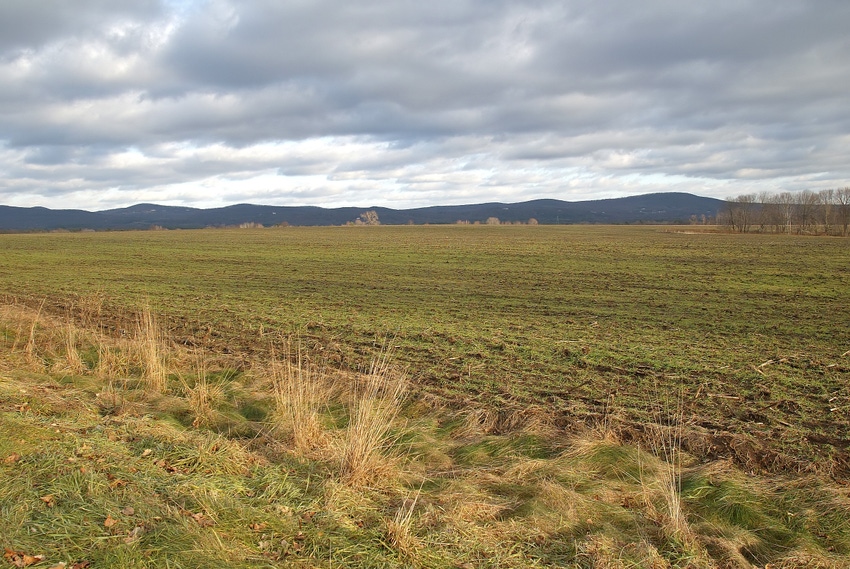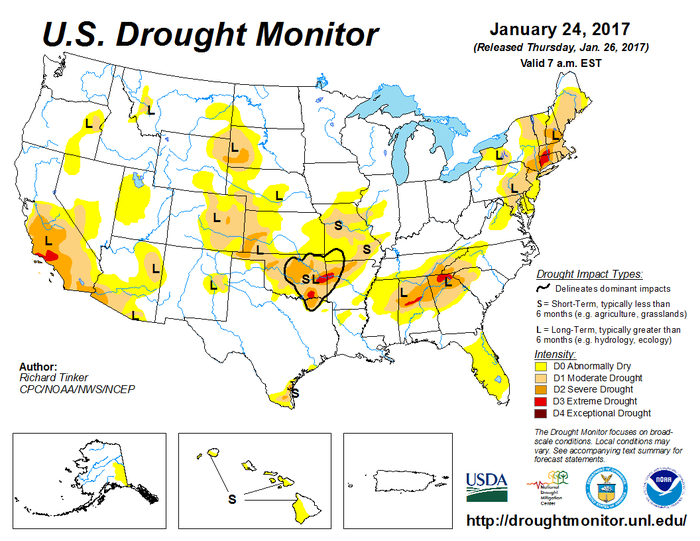U.S. free of D4-level drought for first time since 2011.

MDA Weather Services reported that the latest 31-60 day weather outlook is trending slightly warmer across the northwestern Midwest and east-central Plains, reducing threats of late-season winterkill.
“Mild temperatures in Florida will also keep frost threats there low,” noted Kyle Tapley, senior agricultural meteorologist for MDA.
As for the Pacific Northwest, he said the precipitation outlook has trended slightly wetter, which would improve moisture further for white winter wheat.
“The dry pattern in the central and western Plains would allow moisture there to decline again, and moisture shortages would also build again in the Southwest,” Tapley said, adding that abundant showers in the eastern and southern Midwest and northern Delta would maintain favorable moisture in those regions, while limited rains in the southern Delta would allow fieldwork there to increase.
“Generally, we are not expecting any sustained cold across the Central U.S. over the next few months, with above-normal temperatures expected across the southern U.S. We are forecasting above-normal precipitation for March and April across the west-central Midwest and the Delta, which could lead to some delays in corn planting,” he said.
The U.S. Drought Monitor this week reported that, as of Jan. 24, drought has eased to 16% for the lower 48 states. This is the first time the 48 states have been free of D4-level (exceptional) drought since March 29, 2011.
National Drought Mitigation Center (NDMC) climatologist Deborah Bathke said precipitation in December helped improve and even eliminate drought conditions in many locations across the contiguous U.S.
“Most notably, the Southeast saw an elimination of exceptional (D4) drought, with additional categorical decreases throughout much of the region. Long-term drought conditions in the West and Northeast also saw improvements,” she said.
At the beginning of January, drought was affecting 22.53% of the contiguous U.S., compared to 31.46% on Nov. 30.
Improvements were seen in all drought categories, Bathke noted. Severe drought was cut in half, decreasing from 16.60% to 8.63%. Extreme drought decreased from 8.66% to 3.15%, and exceptional drought decreased from 2.68% to 0.96%. Drought area also decreased from 8.34% to 2.47% in Hawaii. There was no drought in Alaska or Puerto Rico.
Drought is now affecting 119.3 million people in the U.S. versus 148.6 million at the end of November, Bathke added.

South American forecast wetter
MDA senior agricultural meteorologist Don Keeney said the forecast for February in Argentina has trended wetter overall, but excessive rainfall is not currently expected, which should prevent wetness from increasing significantly again in central Argentina.
“The normal rainfall across most of Argentina in February would favor corn and soybean growth,” he said.
In Brazil, Keeney said the forecast has trended drier in far northern areas, which would favor early harvesting of corn and soybeans.
“Above-normal rainfall in southern Brazil during February would favor late growth of corn and soybeans,” he said.
Below-normal rainfall in north-central Argentina would favor dry-down and harvesting of crops. Near-normal rainfall in Brazil would favor fieldwork and early growth of safrinha corn. However, Keeney said the forecast for April shows warmer and drier weather across northern and central Brazil, which would stress development of the safrinha corn crop. “Normal to below-normal rainfall in Argentina would also favor the soybean harvest,” he added.
About the Author(s)
You May Also Like


.png?width=300&auto=webp&quality=80&disable=upscale)
